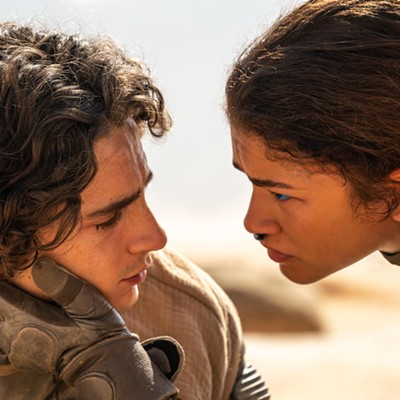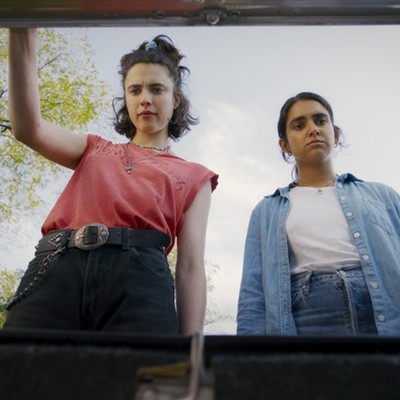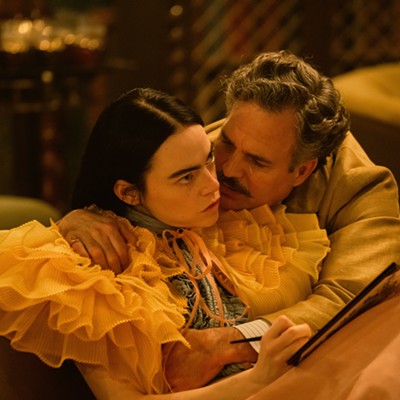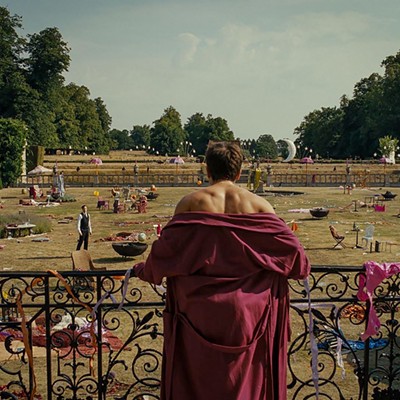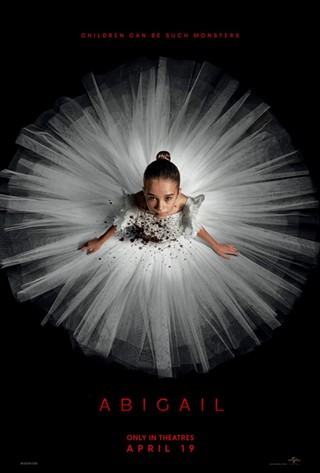After The White Balloon, Panahi made the equally excellent and equally little-girl-centered The Mirror, and then changed directions with The Circle, a film about the taboo subject of adult women.
Which is to say, Panahi works in Iran. Iranian films in the '90s were known for focusing on the lives of children. Besides The White Balloon and The Mirror, films like The Water Jar, A Time for Drunken Horses and The Children of Heaven employed casts of children, in part, because Iranian censorship rules made it very difficult to film adults of different sexes in the same scene.
Artists like Panahi and Kiarostami, though, couldn't live with this rule, and started making grown-up movies. As a result, both have had trouble with censors, and Panahi's The Circle was banned in Iran. Their more recent films are therefore more overtly political, but they don't translate as well, since the children's stories had to rely on universal themes while the adult films are more about specifically Iranian problems.
Crimson Gold tries to split the difference by using an emotive center to talk about social problems. In many ways, it seems like a Persian take on a French new wave take on an American film noir, but it's not just another Irano-Franco-American noir-wave existential crime thriller. Instead, it's the story of how class differences weigh upon the soul of an impoverished war hero named Hussein.
The film opens with a robbery gone wrong that results in the suicide of one of the criminals. That criminal turns out to be Hussein, and the rest of the film details how he came to think it would be a good idea to bust up a jewelry store and then stick a gun to his head and decorate the walls with his brains.
Hussein is a delivery man who rides his motorcycles through the streets of Tehran, bringing the shining gift of pizza to the Persian masses. In the course of this job, Hussein is constantly reminded of his social status. At one point, he is denied entry to a fancy jewelry store (which he'll later return to for the brain-painting); on another occasion, he must sit and wait for hours while the police raid a party. Later, he is invited into the house of a wealthy roué, where the opulence in which the decadent man lives only makes Hussein more strongly feel his own poverty.
Husky Hussein greets all of these injustices with silent brooding, and by the latter half of the film, you can clearly see that he's on the verge of going totally Travis Bickle. (Actually, there's a lot of Taxi Driver in this film, including an awesome jazz-trumpet soundtrack by Peyman Yazdanian, who you probably remember best from his work Kaze no jutan or Gahi be aseman negah kon. Or not.)
Sadly, instead of getting his angst out by loving Jodie Foster, Hussein just swallows it and gets more and more morose. Panahi uses Hussein's blank silence as the focal point around which contemporary Tehran can reveal itself.
Perhaps most telling is the scene in which Hussein must wait outside an apartment building while the cops arrest party-goers. Hussein is detained for no reason and becomes a spectator to a quintessentially Iranian scene. The police know that there's a party going on, but instead of raiding the building, they wait at the door and arrest the revelers, one by one, as they leave. It shows the small indignations and vague horror of a country in which "party" is no longer allowed to be used as a verb.
As he waits for the raid to finish, Hussein asks a young soldier if he's ever had any fun. In a heavy-handed moment, the soldier admits that he doesn't know what the word "fun" means.
There are a number of bits (like that one) that hit too hard, but on the whole, the film retains a reasonable degree of subtlety, thanks in large part to cinematographer Hossein Djafarian, who keeps things dark and tight with lots of evil-looking shadows and careful framing.
The final and opening sequence is shot in a nearly dark room with the camera centered upon a doorway opening into the morning light. During the course of the scenes, the camera zooms slowly in on the open door, which is then barred shut. In some ways, this is an overly obvious metaphor, both for Hussein's increasingly obsessive attitude about his social class and for Panahi's take on Iranian society. Either way, the film retains a good deal of the power, if not the originality, of Panahi's earlier work, while pointing out that the limits under which Iranian filmmakers have worked for so long have now reached a boiling point that verges on violence.
Don't worry, though: Word on the grapevine is that a revolution is scheduled for a fall release, and it's sure to feature a cast of millions. Let's hope Panahi is there with his camera when the clerical government heads into its third act; I can't wait to see the kind of work he'll do when he doesn't have two mullahs and an ayatollah trying to drape a veil over his lens.

